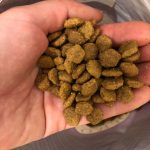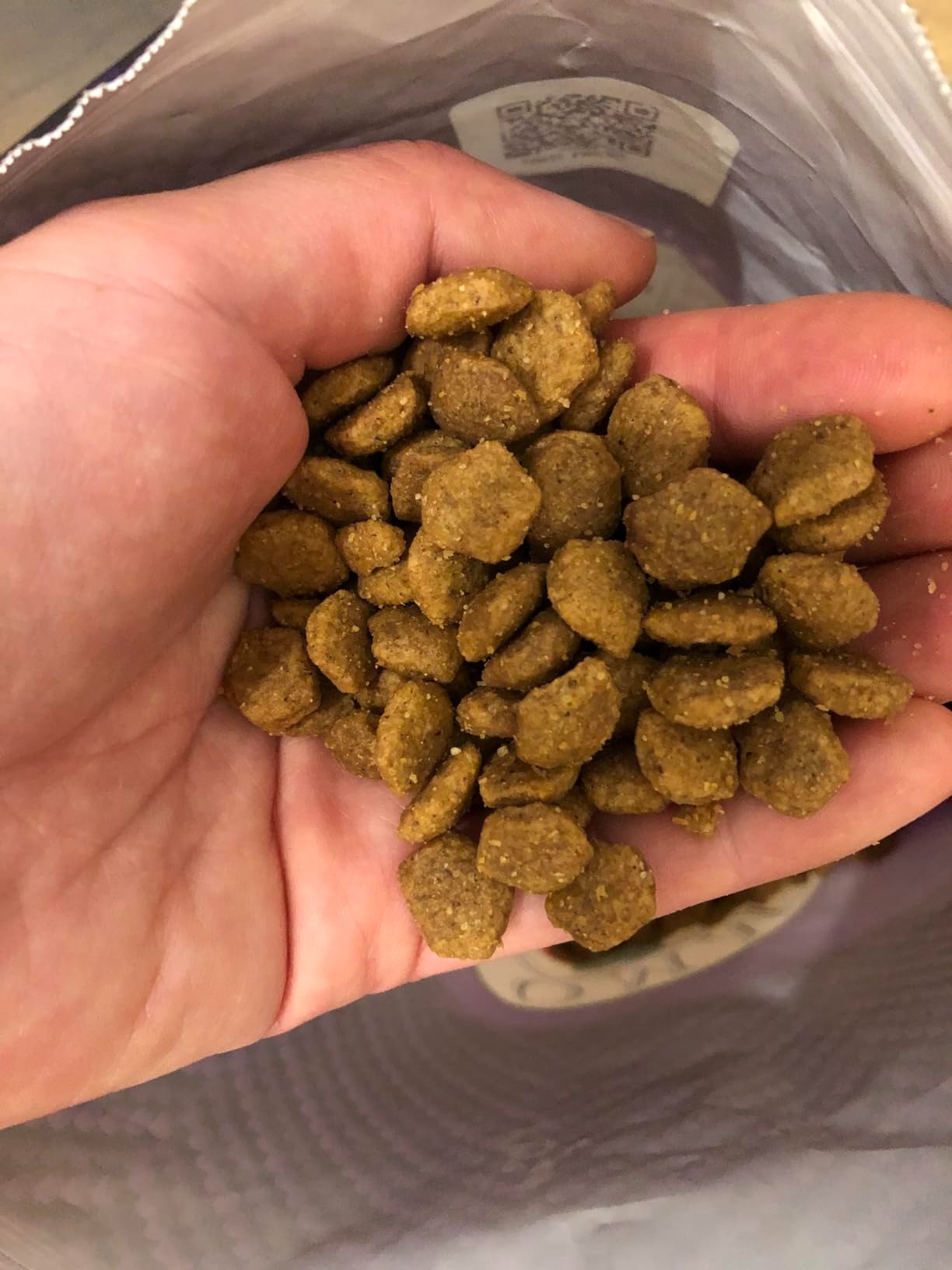What Causes a Fish Tank to Turn Green?
Why is my fish tank green? A fish tank can turn green for several reasons, but the most common cause is algae growth. Algae are simple organisms that thrive in environments with light, nutrients, and water movement. When these conditions are met, they multiply quickly, making the water appear cloudy or green.
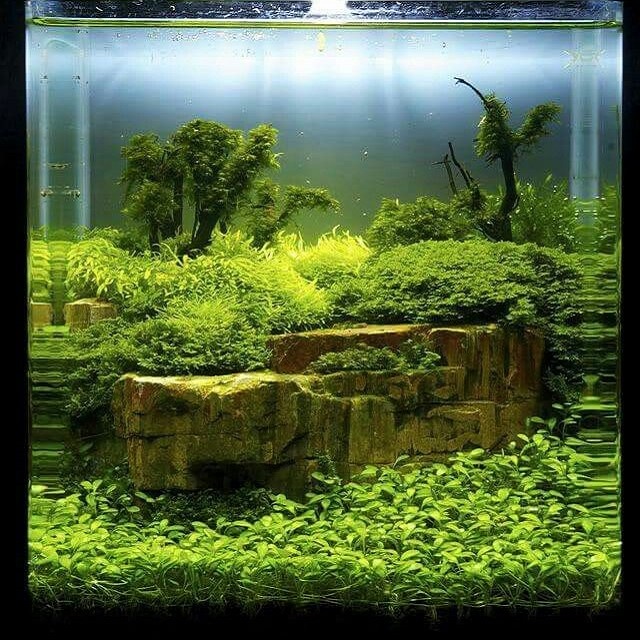
One of the main types of algae that cause green water is planktonic algae, which float freely in the water. These tiny organisms are often visible as a green haze, especially when light hits the tank from above. They are not harmful to fish, but they can be unsightly and difficult to manage.
Another possible reason is excess nutrients in the water. This happens when there is too much nitrate or phosphate, often from overfeeding, decaying plant matter, or poor filtration. These nutrients act as food for algae, causing them to grow rapidly.
In addition, too much light can also lead to green water. If your tank receives direct sunlight or long hours of artificial lighting, it creates the perfect environment for algae to flourish. Algae need light to photosynthesize, so more light means more growth.
Lastly, improper water changes can contribute to green water. If you don’t change the water regularly, waste and nutrients build up, creating an ideal environment for algae to develop.
Understanding why your fish tank is green is the first step toward fixing the issue.
Common Reasons Your Fish Tank Is Green
There are several common reasons why your fish tank might turn green. One of the most frequent causes is excessive light exposure. If your tank gets too much direct sunlight or stays on for too long, it encourages algae growth. This is especially true if the light is intense or unfiltered.
Another major cause is poor water quality. If the water contains high levels of nitrates or phosphates, it provides nutrients for algae to thrive. This often happens when overfeeding or inadequate cleaning leads to waste accumulation.
Additionally, lack of proper filtration can make your tank green. A weak or clogged filter doesn’t remove enough debris and nutrients, allowing algae to grow unchecked. This is a problem that can worsen over time if not addressed.
Some fish tanks become green because of overstocking. Too many fish in a small space can lead to increased waste production and higher nutrient levels, which feed algae. This is especially true for new tanks that haven’t fully cycled yet.
Also, poor maintenance routines can play a role. Skipping regular water changes, gravel cleaning, or filter maintenance allows debris and nutrients to build up, leading to unwanted algae growth.
By identifying the root cause, you can take effective steps to restore clarity to your fish tank.
How to Identify the Type of Green in Your Fish Tank
Determining the type of green in your fish tank helps you choose the right solution. The most common form is green algae, which appears as a cloudy, hazy layer throughout the water. This is usually caused by planktonic algae, which floats in the water column.
Another type is string algae, which looks like long, slimy strands that attach to rocks, plants, or glass. This type of algae is often easier to clean but can still indicate nutrient imbalances in the tank.
Brown algae may also appear, though it’s less common. It tends to look muddy or brownish and is often found on glass surfaces. This is usually a sign of high silicate levels or old lighting systems.
If the green is only on the glass, it could be film algae. This type of algae grows on surfaces and can be wiped away easily. However, it can return quickly if conditions aren’t corrected.
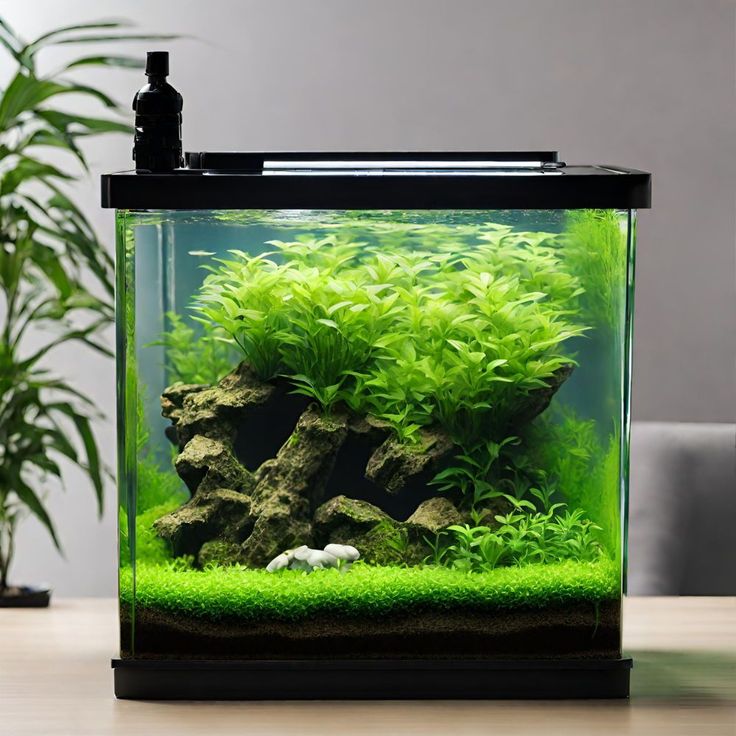
Lastly, blue-green algae is actually a type of bacteria, not real algae. It appears bluish-green and can be difficult to remove without special treatments.
Knowing the type of green in your tank helps you target the right treatment and prevent future problems.
How to Fix a Green Fish Tank
Why is my fish tank green? Fixing a green fish tank involves addressing the root causes of algae growth. One of the best ways to start is by reducing light exposure. Limit the amount of direct sunlight your tank gets, and avoid leaving the lights on for more than 8–10 hours per day. This helps slow down algae growth and gives your tank a chance to recover.
Next, clean your tank thoroughly. Use a gravel vacuum to remove debris, and scrub the glass and decorations to eliminate any visible algae. This helps reduce the algae load and improves overall water clarity.
It’s also important to perform regular water changes. Replace 20–30% of the water every week to remove excess nutrients and keep the water clean. This is one of the most effective ways to prevent green water from returning.
Adding live plants to your tank can also help. Plants compete with algae for nutrients and light, reducing their growth. Choose fast-growing species like anacharis or hornwort, which absorb excess nitrates and phosphates.
You should also check your filter. Make sure it’s working properly and replace the carbon or mechanical media as needed. A well-maintained filter removes impurities and prevents algae buildup.
Lastly, consider using algaecides or chemical treatments. These products can kill algae, but they should be used with caution and only after other methods have failed.
By taking these steps, you can clear your tank and keep it healthy.
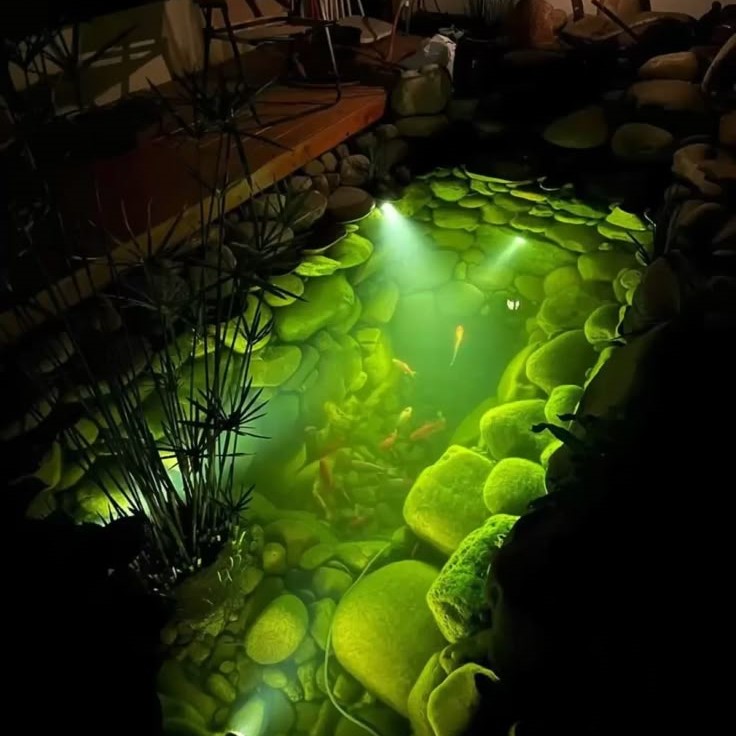
Preventing Future Green Water in Your Fish Tank
Why is my fish tank green? To prevent your fish tank from turning green again, it’s important to maintain good habits. Start by limiting light exposure. Avoid placing your tank in direct sunlight and use a timer to control the lighting schedule. This helps regulate algae growth and keeps the tank visually appealing.
Regular water changes are also essential. Aim to change 20–30% of the water weekly to remove excess nutrients and keep the water clean. This helps prevent the buildup of nitrates and phosphates, which feed algae.
Cleaning the tank regularly is another key step. Use a gravel vacuum to remove debris, and scrub the glass and decorations to eliminate algae buildup. This helps maintain a clean environment and reduces the need for chemical treatments.
Avoid overfeeding your fish. Excess food decays in the tank, releasing nutrients that fuel algae growth. Feed your fish only what they can eat in a few minutes, and remove any leftover food promptly.
Using live plants is a great way to control algae naturally. They absorb nutrients and provide oxygen, helping to balance the ecosystem. Choose hardy, fast-growing plants that can compete with algae for resources.
Finally, ensure your filter is working properly. Clean or replace the media regularly to remove impurities and prevent nutrient buildup. A well-functioning filter is crucial for keeping your tank clear and healthy.
By following these prevention strategies, you can avoid green water and enjoy a clean, clear aquarium.
How to Control Algae Growth in Your Fish Tank
Controlling algae growth in your fish tank requires consistent effort and attention. One of the best ways to do this is by reducing light exposure. Use shade covers or move the tank away from windows to minimize sunlight. You can also use LED lights with timers to limit the duration of artificial lighting.
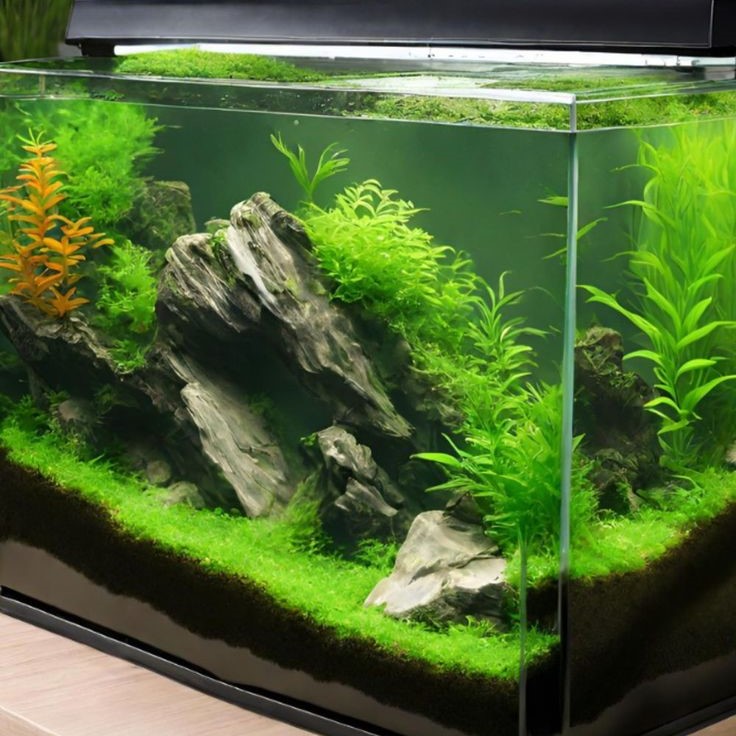
Another effective method is adding algae-eating fish or snails. Species like otocinclus catfish, plecos, or nerite snails help naturally control algae. These creatures feed on algae and keep the tank clean, reducing the need for manual cleaning.
Maintaining good water flow is also important. Algae tend to grow in still or stagnant areas. Use powerheads or filters to create gentle currents, which help prevent algae from settling and keep the water moving.
Using algaecides carefully can also help. These products target specific types of algae and are useful for spot treatments. However, they should be used sparingly and according to instructions, as overuse can harm your fish and disrupt the balance of your tank.
Regular maintenance is key. Clean the glass, decorations, and substrate to remove algae before it becomes a problem. This helps keep the tank looking clean and prevents algae from spreading.
Lastly, monitor your water parameters. Test the nitrate and phosphate levels regularly to ensure they stay within safe limits. This helps prevent the conditions that encourage algae growth.
With these methods, you can keep your tank clear and healthy.
The Role of Light in Green Fish Tanks
Light plays a major role in causing green water in fish tanks. Algae need light to grow, and if your tank receives too much or too intense light, it can lead to rapid algae development. This is especially true for tanks with bright overhead lights or those placed near windows.
To reduce the impact of light, try covering part of the tank with a lid or curtain. This helps block direct sunlight and controls the amount of light your tank receives. You can also adjust the lighting schedule by using a timer to limit the number of hours the lights are on each day.
If your tank has LED or fluorescent lights, consider switching to a lower intensity or using a dimmer. This helps create a balanced environment and reduces the chances of algae growth.
Another tip is to use a light cover. Some tanks come with built-in covers, while others require custom solutions. A simple fabric or plastic cover can significantly reduce light penetration and slow down algae development.
Lastly, avoid using too many lights. Each additional light source increases the risk of algae growth. Stick to one or two lights and adjust the brightness based on your tank’s needs.
By managing light exposure, you can prevent your tank from turning green and keep it clear and healthy.
How to Maintain Clear Water in Your Aquarium
Keeping your fish tank clear and free of green water requires consistent care and attention. Start by reducing light exposure. Place your tank away from windows and use a timer to control the lighting period. This helps prevent algae from growing and keeps the water cleaner for longer.
Next, perform regular water changes. Change 20–30% of the water each week to remove excess nutrients and improve water quality. This helps reduce the conditions that support algae growth.
Clean the substrate and decorations regularly. Use a gravel vacuum to remove debris and prevent organic material from feeding algae. Wipe the glass and ornaments to remove any visible algae and keep the tank looking fresh.
Avoid overfeeding your fish. Excess food decays in the tank, increasing nutrient levels that support algae growth. Feed your fish only what they can eat in a few minutes, and remove leftover food promptly.
Add live plants to your tank. They help absorb nutrients and produce oxygen, which supports a healthy environment. Choose fast-growing species that compete with algae and keep the tank balanced.
Finally, check your filter. Make sure it’s working properly and replace the media as needed. A strong filter helps remove impurities and prevents algae from thriving.
By maintaining good habits, you can keep your tank clear and healthy.
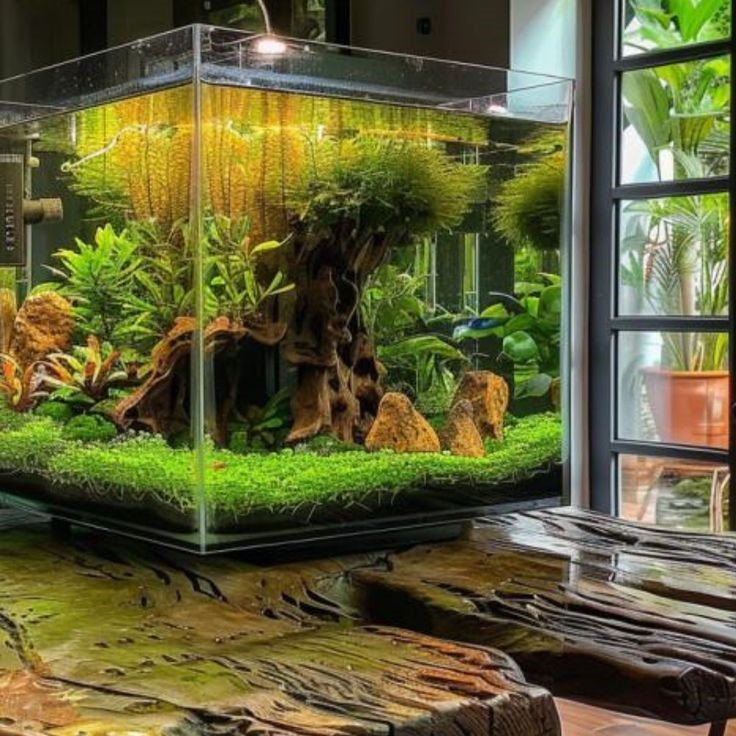
Final Thoughts on Why My Fish Tank Is Green
A green fish tank is a common issue that many hobbyists face. As we’ve explored, the most likely cause is algae growth, which is driven by light, nutrients, and poor maintenance. Understanding why your fish tank is green is the first step toward finding a solution.
We’ve covered the common reasons, including excess light, poor water quality, and lack of maintenance. By reducing light exposure, performing regular water changes, and adding live plants, you can bring your tank back to its clear, healthy state.
It’s also important to monitor your water parameters and keep your filter running smoothly. These steps help prevent algae from returning and ensure a stable environment for your fish.
Remember, a green tank doesn’t mean your fish are in danger, but it does signal that something needs improvement. With the right approach, you can fix the issue and maintain a beautiful, clear aquarium.
Why is my fish tank green? It’s often due to algae growth, but with the right care and maintenance, you can restore clarity and keep your tank healthy.

